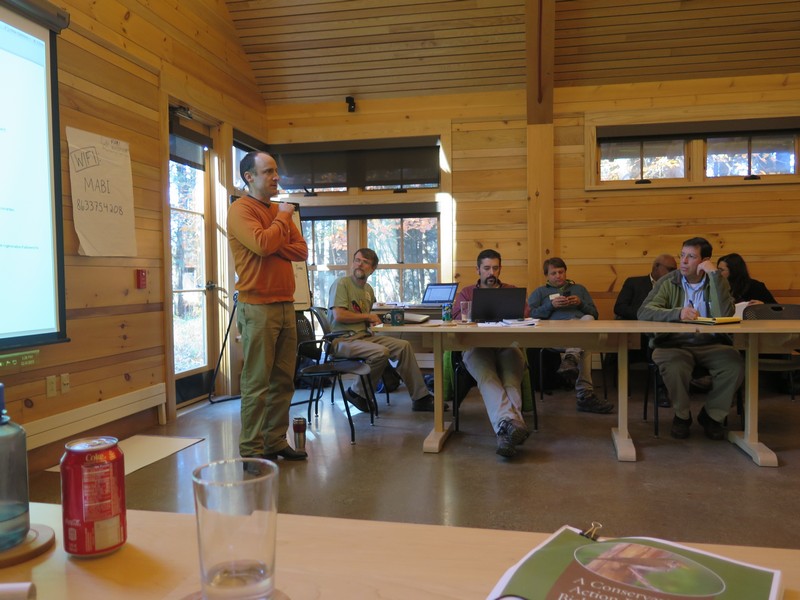Twenty-one conservation biologists from three countries convened last week in Woodstock with the express purpose of conserving a small migratory songbird across its hemispheric range. The bird in question – Bicknell’s Thrush – has been a conservation priority for VCE and our many partners during the past 25 years. In fact, VCE catalyzed the 2007 formation of a group that is dedicated to the species’ rangewide protection. The International Bicknell’s Thrush Conservation Group, or IBTCG, is composed of scientists and conservation practitioners from Canada, the U.S., the Dominican Republic, and other Caribbean countries within the species’ narrow winter range. We had not met as a group since an historic 2010 meeting in the Dominican capital of Santo Domingo.
Our charge for last week’s gathering was to review and begin a process of revising IBTCG’s Conservation Action Plan for Bicknell’s Thrush, whose production VCE spearheaded in 2010. The Plan set an ambitious recovery goal for this rare and globally vulnerable species: a 25% population increase by 2060 with no net loss of breeding distribution. The actions outlined to achieve this goal are daunting, and IBTCG had explicitly recommended that the Plan be reviewed five years after its release. A great deal of hard work has been done and tangible progress achieved since 2010, but conservation science, especially of a long-distance migrant like Bicknell’s Thrush, is full of twists and turns. A careful review of our progress and the changing landscape of needs was due.
Participants from all corners of the hemisphere assembled at the Marsh-Billings-Rockefeller National Historic Park’s Forestry Center for two days of concentrated meeting on November 4 and 5. With VCE Director of Science (and newly-elected IBTCG Chair) John Lloyd leading us, we formed breeding and wintering grounds break-out groups – each group reviewed population threats facing Bicknell’s Thrush, identified and updated conservation actions, and prioritized research and monitoring needs. We outlined a roadmap to create a revised Conservation Action Plan, elected a new IBTCG Coordination Committee, and committed our respective organizations to specific tasks.
As meetings go, ours was remarkably productive, not to mention spirited and fun. The IBTCG has a tremendous shared commitment to conserve Bicknell’s Thrush and its vulnerable habitats rangewide. We will succeed only by collaborating across all phases of the species’ annual cycle – from Canada’s industrial forestry landscape, to New England and New York’s rugged peaks, to the wet broadleaf mountain forests of Hispaniola, Cuba, Jamaica and Puerto Rico. We’ve given ourselves a weighty charge, and we’re eager to tackle the hard work ahead.


